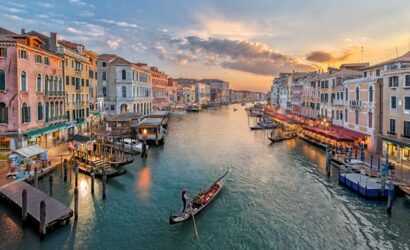Tower Bridge is one of the most iconic landmarks in London, known for its distinctive Victorian Gothic architecture and its role as a combined bascule and suspension bridge. Here are some key points about Tower Bridge:
### History and Construction
– **Completion Date**: Tower Bridge was completed in 1894 after eight years of construction.
– **Architect**: The design was created by Sir Horace Jones, the City Architect, in collaboration with John Wolfe Barry, the engineer.
– **Purpose**: The bridge was built to provide a crossing over the River Thames while allowing tall ships to pass through, addressing the needs of both road traffic and river navigation.
### Design and Structure
– **Type**: Tower Bridge is a combined bascule and suspension bridge. The bascules (drawbridges) can be raised to allow river traffic to pass underneath.
– **Length**: The bridge is 800 feet (244 meters) long.
– **Towers**: The two main towers, which are 213 feet (65 meters) high, are connected by two horizontal walkways at the upper level.
– **Materials**: The bridge is constructed from over 11,000 tons of steel, with the distinctive Gothic-style cladding made of Portland stone and Cornish granite to blend in with the nearby Tower of London.
### Features
– **Bascule Mechanism**: Originally powered by steam, the bascule mechanism is now powered by oil and electricity. The bascules can be raised in about five minutes.
– **Walkways**: The upper walkways provide a stunning view of London and were originally designed for pedestrians to use when the bascules were raised. Today, they are part of the Tower Bridge Exhibition.
– **Exhibition**: The Tower Bridge Exhibition showcases the history of the bridge and offers access to the engine rooms where the original steam engines were housed.
### Cultural Significance
– **Iconic Status**: Tower Bridge is one of the most photographed structures in London and is often mistakenly referred to as London Bridge.
– **Appearances in Media**: The bridge has appeared in numerous films, TV shows, and advertisements, symbolizing London.
### Visitor Information
– **Location**: Tower Bridge is located close to the Tower of London, spanning the River Thames between the Borough of Tower Hamlets and the Borough of Southwark.
– **Access**: Visitors can explore the Tower Bridge Exhibition, which includes access to the walkways and the Victorian engine rooms. The exhibition provides detailed insights into the bridge’s construction, history, and operation.
– **Events**: The bridge hosts various events and activities, including behind-the-scenes tours and special exhibitions.
### Notable Facts
– **Misconception**: Many people confuse Tower Bridge with London Bridge, which is actually a different bridge located upstream.
– **Opening**: The bridge opens about 800 times a year to allow river traffic to pass, which can be a spectacular sight.
Tower Bridge remains a marvel of Victorian engineering and a symbol of London’s rich history and architectural innovation.
Overview
Travel is the movement of people between relatively distant geographical locations, and can involve travel by foot, bicycle, automobile, train, boat, bus, airplane, or other means, with or without luggage, and can be one way or round trip. Travel can also include relatively short stays between successive movements.
The origin of the word “travel” is most likely lost to history. The term “travel” may originate from the Old French word travail, which means ‘work’. According to the Merriam Webster dictionary, the first known use of the word travel was in the 14th century.
It also states that the word comes from Middle English travailen, travelen (which means to torment, labor, strive, journey) and earlier from Old French travailler (which means to work strenuously, toil). In English we still occasionally use the words “travail”, which means struggle. According to Simon Winchester in his book The Best Travelers’ Tales (2004), the words “travel” and “travail” both share an even more ancient root: a Roman instrument of torture called the tripalium (in Latin it means “three stakes”, as in to impale).






